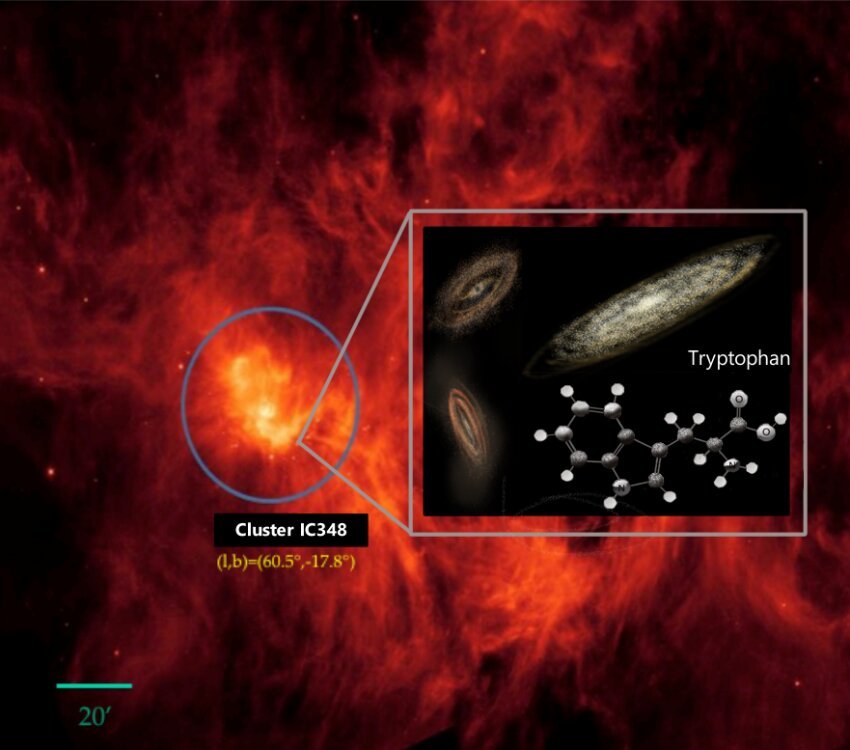Dr. Susana Iglesias-Groth, a researcher from The Instituto de Astrofísica de Canarias (IAC), has made a significant discovery using data from the Spitzer space observatory. Her research, published in Monthly Notices of the Royal Astronomical Society, presents evidence for the presence of the amino acid tryptophan in interstellar material within a nearby star-forming region.
The Perseus molecular complex, specifically the IC348 star system located 1,000 light years away from Earth, was found to contain high levels of tryptophan. Although this region is not visible to the naked eye, it exhibits a bright glow when observed in infrared wavelengths.
Tryptophan is one of the crucial amino acids essential for the creation of vital proteins supporting life on Earth. Due to its spectral properties in the infrared range, it was a logical choice for investigation using the Spitzer satellite, which boasts an extensive spectroscopic database.
Through the analysis of infrared emissions from the Perseus region, the research identified 20 emission lines associated with tryptophan molecules. These molecules were found to have a temperature of approximately 280 Kelvin, equivalent to 7°C. Notably, previous work by Iglesias-Groth in IC348 had also revealed water and hydrogen at similar temperatures.
The study implies that the observed emission lines related to tryptophan may be present in other regions where stars and planets are forming. This suggests that the occurrence of these lines in the gas and dust from which celestial bodies originate is widespread.
Amino acids have been commonly detected in meteorites and were present during the formation of our own solar system. This recent breakthrough indicates that these fundamental components of proteins, crucial to life’s development, naturally exist within regions where stars and planetary systems take shape. Consequently, they may contribute to the early chemical processes within planetary systems around other stars.
Dr. Iglesias-Groth emphasizes the importance of this finding, stating that the identification of tryptophan in the Perseus molecular complex should motivate further investigations to uncover other amino acids in this region and other star-forming areas. The widespread presence of protein-building blocks in the gas and dust surrounding the formation of stars and planets holds tremendous potential for the understanding of life’s development in exoplanetary systems.
Source: Royal Astronomical Society
